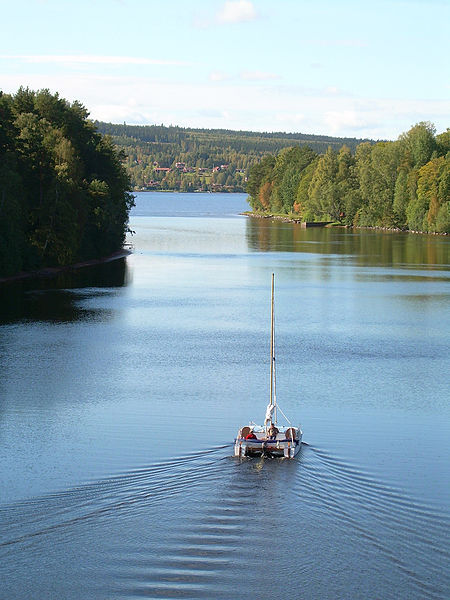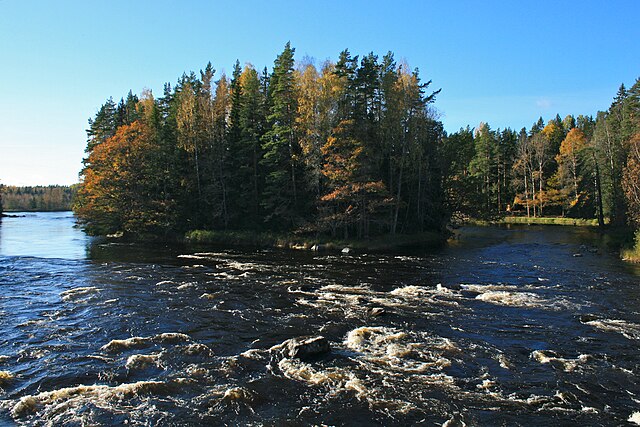The Dal River is a river in central Sweden that flows from the north of Dalarna and runs into the sea in northern Uppland; it is commonly considered to be the southern border of Norrland, however only the last part correlates with Limes Norrlandicus. The northern part is split into two rivers: Österdalälven and Västerdalälven. The two connect in Djurås. It is over 520 kilometres (320 mi) long — the second longest river in Sweden, and has a hydropower potential of 1420 megawatts, of which 2/3 is utilized. The largest power plant is located at the Trängslet Dam. Dalälven has been significant historically as a raft transport route.
Nedre Dalälven River Landscape, Sweden, covers 308,000 hectares (1,190 sq mi) with a mixture of wetlands, rivers, lakes, flood plains and productive forests. It includes Lake Hovran and Färnebofjärden Bay Ramsar site.
Dal River viewed from the crossing of road 70 between Avesta and Hedemora
Österdalälven at Leksand
The Lower Dalälven is a succession of fjärdar and rapids, such as these at Sevedskvarn.
Log drivers in lake Hovran in Dalälven, about 1920.
Dalarna, also referred to by the English exonyms Dalecarlia and the Dales, is a landskap in central Sweden.
Lake Runn (Runnsjön) close to Torsång (Borlänge)
A Daleswoman from Leksand in traditional folk dress, 1911.
A giant Dala horse in central Avesta.







